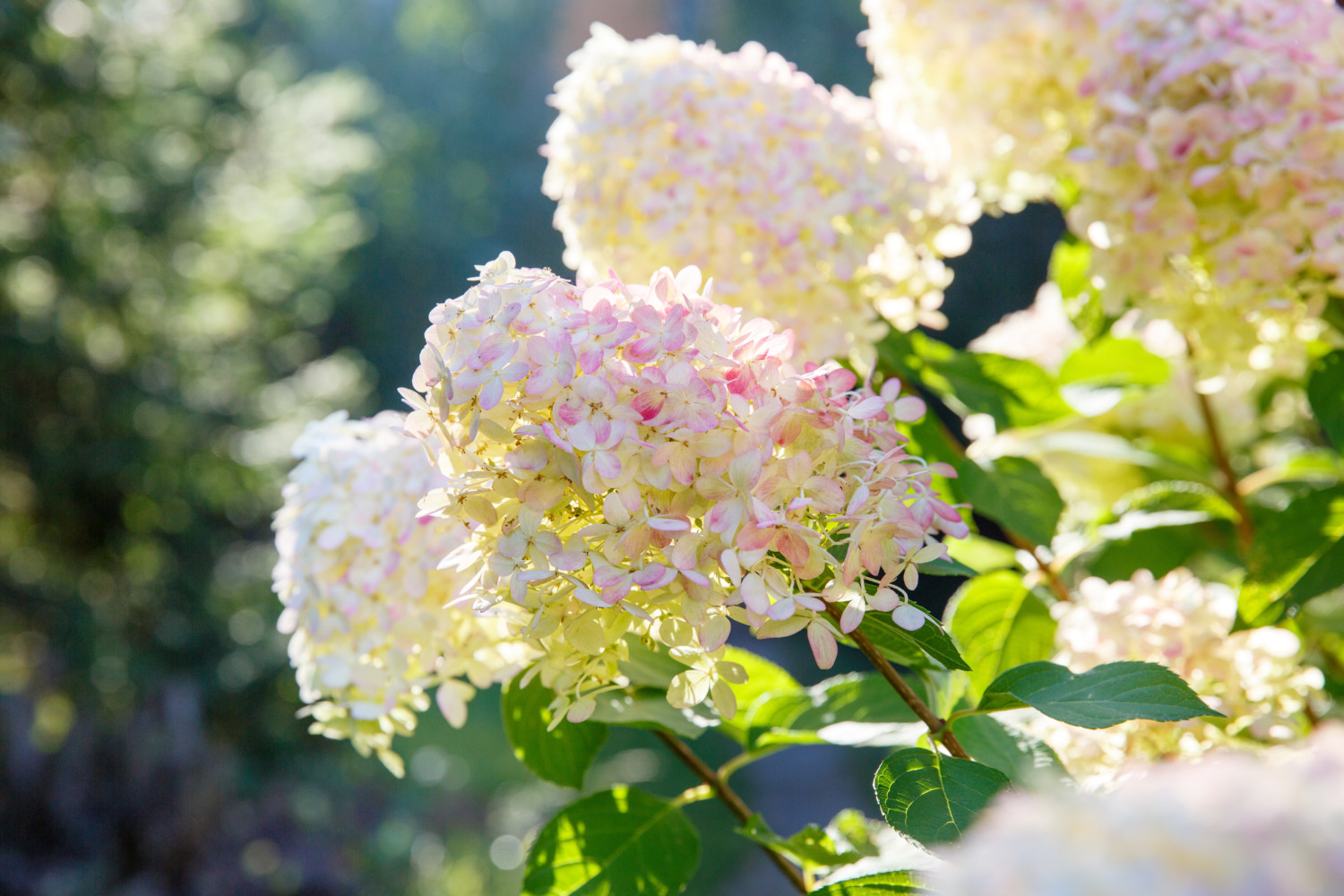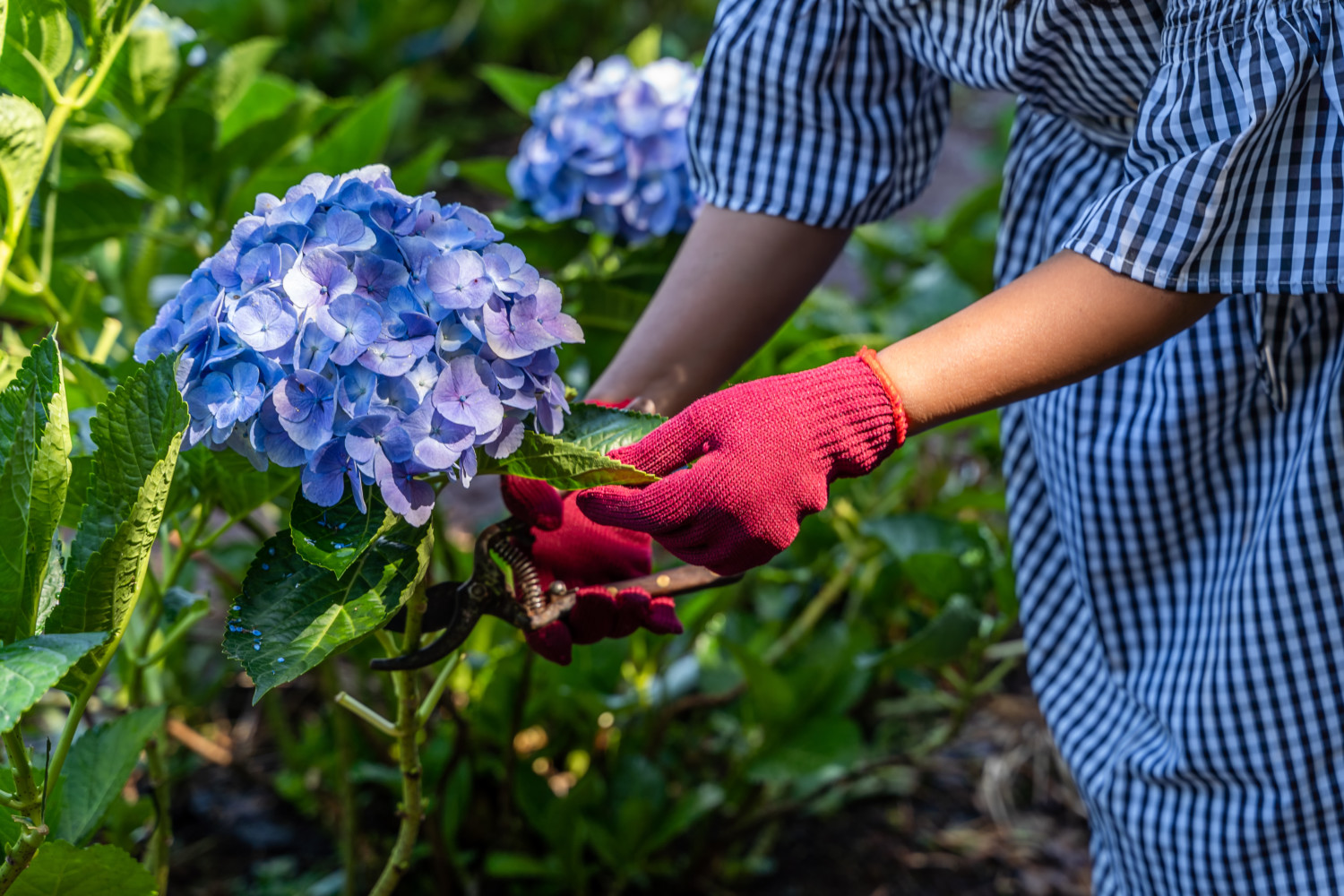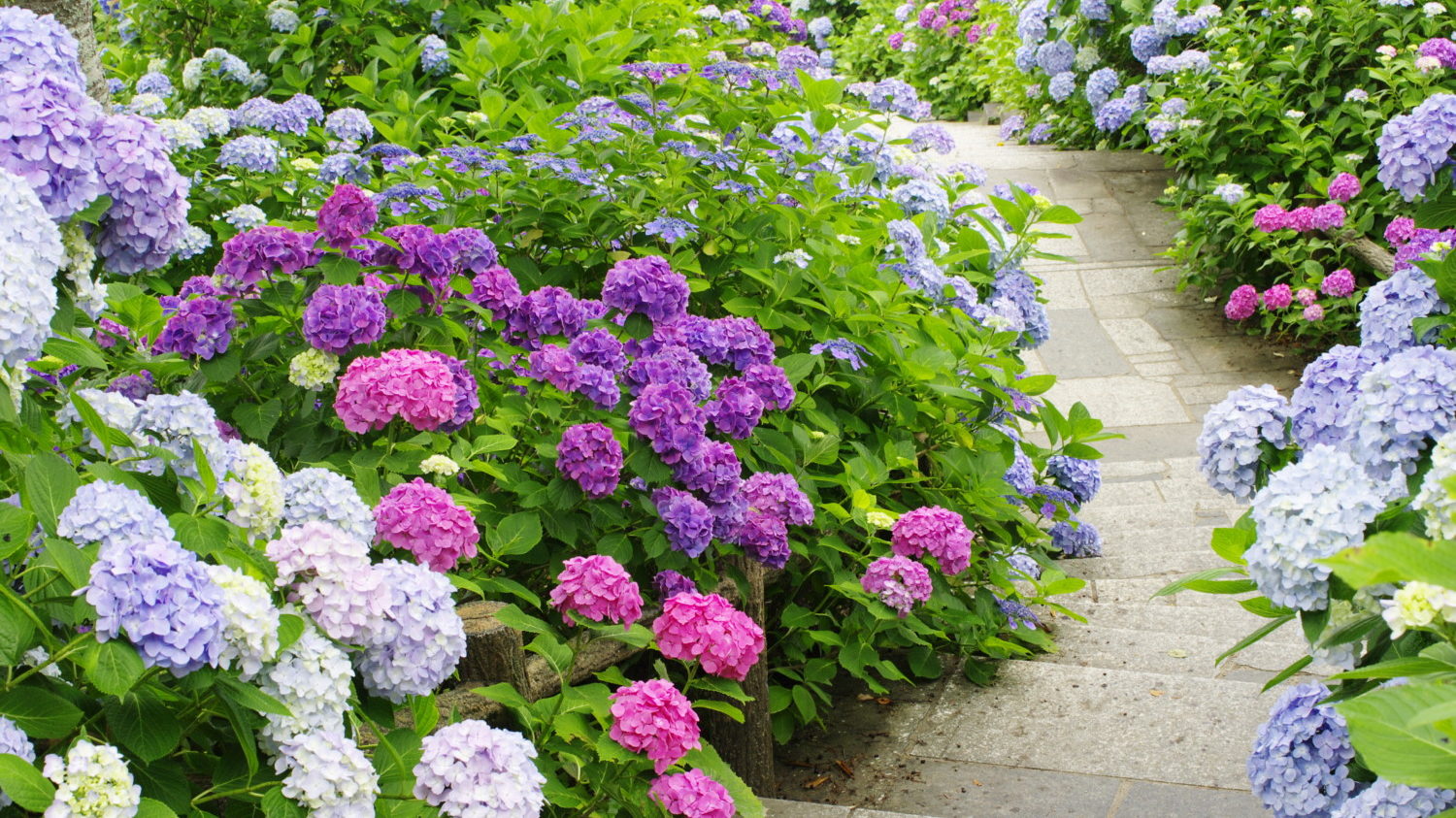Hydrangeas are as fascinating as they are beautiful. There are about 100 species of this flowering shrub, although you’ll find a few main types in North America. They may be white, pink, blue, red, purple and even pistachio. Gardeners can change the colors of hydrangeas by adjusting the soil’s pH levels, as well.
Another wonderful aspect of hydrangeas is how easy they are to propagate. With just a handful of simple steps and a few expert tips, you can multiply your gorgeous hydrangea plants for free from an existing shrub.
One way is to take cuttings and plant them. The other approach involves growing more roots on a branch before you remove it from the plant. Both methods can be highly successful, so choose the one that is easiest for you.

Propagating Hydrangeas From Clippings
There are two key factors to consider when clipping hydrangeas to multiply the plant: when you cut and where you cut. The best time is between late spring and early summer when new stems first start to harden. New stems will bend but snap off easily, and these cuttings are predisposed to robust growth.
Take a 5- to 6-inch-long cutting of a tender, green branch that did not flower this year. Cut just below a leaf node, but make sure the cutting has at least three sets of leaf nodes, which is where a leaf comes out of the branch. Remove the lower leaves of the bottom two leaf nodes. Cut the largest leaves down to about half their size, as well.
If desired, you can dip the cutting in rooting hormone (this will speed up the process but isn’t necessary). Insert it into damp vermiculite or sterile medium in a well-drained container with one or two nodes buried.
Water well and cover with plastic or place the pot into a lidded plastic container, which serves as a humidity dome or miniature greenhouse. Plant them when a healthy root system forms in about four to six weeks. Keep your cuttings out of direct sunlight.

Propagating Hydrangeas On The Shrub
If you want to skip clipping until the new plants are ready, try this brilliant method from The Grumpy Gardener at Southern Living. It allows you to multiply your hydrangea bounty through a simple rooting process.
Put a container full of potting soil under a long, low-hanging branch that bends easily. Remove the leaves from a node near a low point on the branch and tuck the node into the potting soil, making sure the stem is covered. Place a rock on top of the branch to keep it in the pot.
Keep the soil moist and after about two months, check for roots on the buried node. If it has rooted, clip it off of the shrub and transplant it.

With these methods, you can grow thriving shrubs to help create a cottage garden, trade your plants with other gardeners for different varieties or offer plants to family and friends. No matter which method you choose, propagating hydrangeas is a worthwhile effort with stunning results.
This story originally appeared on Simplemost. Checkout Simplemost for additional stories.


